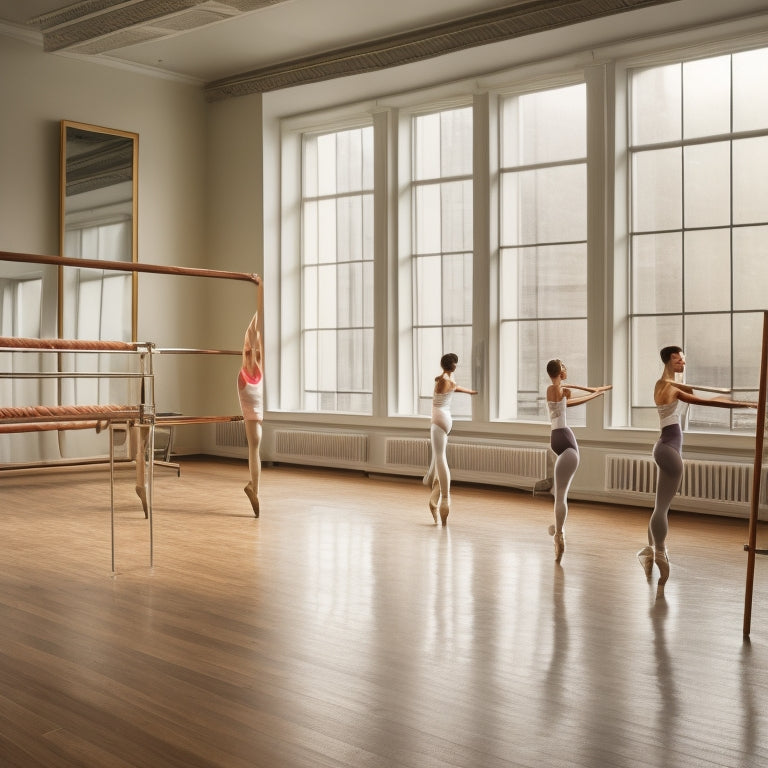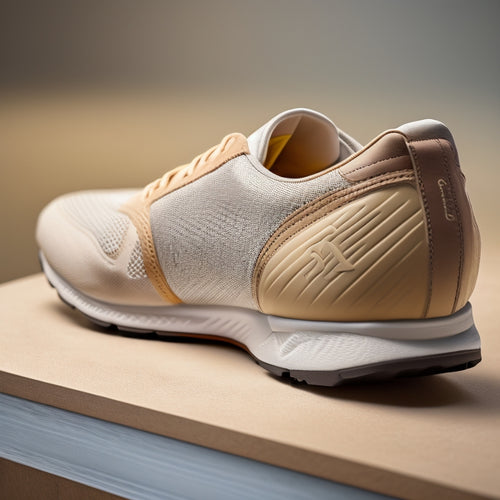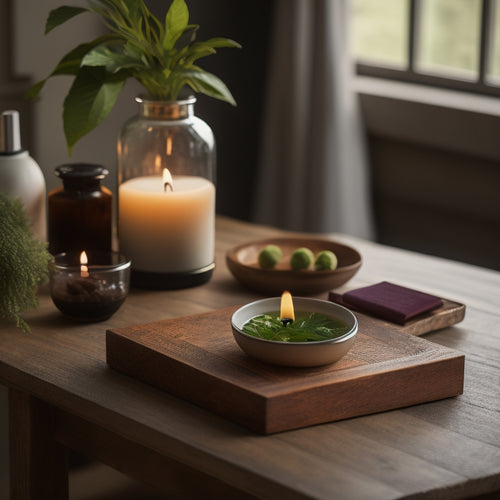
At What Height Should a Ballet Barre Be Mounted?
Share
You need to mount your ballet barre at a height that allows you to maintain a straight line from head to heels, with your elbow at a 90-degree angle and your forearm parallel to the floor. For adults, the typical height range is between 40-42 inches, but it's crucial to take into account your individual body proportions, flexibility, and comfort level. Factors like studio layout, flooring type, and personal preferences also impact the ideal barre height. By taking precise measurements and accounting for these factors, you'll find the perfect height for a safe and effective workout. And there's more to explore to make sure a perfect fit.
Key Takeaways
• The ideal barre height maintains a straight line from head to heels, with a 90-degree elbow angle and forearm parallel to the floor.
• Body proportions, flexibility, and personal comfort level determine the optimal barre height for each individual.
• Measure from the floor to the desired height for wall-mounted barres, considering arm and leg length for accurate placement.
• The average barre height range for adults is between 40-42 inches, but may vary depending on age, stature, and individual factors.
• Adjust the barre height to accommodate individual variations in posture, core strength, flexibility, and range to promote proper alignment and injury prevention.
Understanding the Ideal Barre Height
As you prepare for your ballet workout, set your barre to a height that allows you to maintain a straight line from head to heels, with your elbow at a 90-degree angle and your forearm parallel to the floor. This essential barre height is vital for a safe and effective workout.
Throughout the barre evolution, dance ergonomics have played a significant role in shaping the modern ballet practice. By positioning your barre correctly, you'll be able to move freely and efficiently, reducing the risk of injury and strain.
With the barre at the right height, you'll be able to focus on perfecting your technique, rather than compensating for poor posture or struggling with discomfort. By setting yourself up for success, you'll be free to focus on the beauty and expression of dance.
Factors Affecting Barre Height Placement
Your body proportions, flexibility, and personal comfort level greatly impact the ideal barre height placement, making it important to take into account these factors when setting up your barre.
As you consider the perfect height, think about your studio layout and how it will affect your movement. A cluttered or cramped space may necessitate a lower barre to make sure you have room to move freely.
Additionally, the type of flooring in your studio can also influence your barre height choice. For example, a barre mounted on a sprung floor may need to be slightly higher than one on a hardwood floor.
Measuring for Barre Height Accuracy
To guarantee accurate barre height placement, you'll want to take precise measurements, considering the length of your arm and leg, as well as the distance from the floor to the top of your shoulder when standing flat-footed.
For a wall-mounted barre, measure from the floor to the desired height, taking into account the type of barre you're using. For example, a single barre or a double barre will require different measurements. Use a tape measure or a leveling tool to confirm accuracy.
Take multiple measurements to confirm your findings, and consider enlisting a friend to help you double-check your work. By taking the time to measure carefully, you'll be able to find the perfect height for your ballet barre, giving you the freedom to focus on your dance technique.
Average Height Ranges for Dancers
When thinking about the ideal ballet barre height, it's crucial to grasp the average height ranges for dancers. You'll want to tailor the barre height to accommodate the age and stature of your students, whether they're children or adults.
Let's explore the specific height ranges for each group to guarantee a comfortable and effective ballet practice.
Height for Children
Dancers under the age of 12 typically require a barre height that falls within a specific range, which varies depending on their age and average height. You'll want to guarantee the barre is at a comfortable height for your young dancer, promoting proper childhood posture and supporting their youth development.
For children between 5-6 years old, the barre should be around 28-30 inches high. As they grow, the barre height can increase, reaching 32-34 inches for 7-8 year olds, and 36-38 inches for 9-10 year olds. By adjusting the barre height accordingly, you'll create a safe and supportive environment for your young dancer to flourish.
Ideal Adult Range
For adult ballet dancers, a barre height between 40 and 42 inches is generally considered ideal, allowing you to maintain proper posture and alignment while providing the necessary support for a wide range of exercises and movements. This range is rooted in dance anthropometry, which studies the measurement of human body sizes and shapes in relation to dance movements.
Adjusting for Individual Variations
When adjusting the ballet barre height, you'll need to take into account your individual proportions, bearing in mind the length of your legs, torso, and arms.
You'll also want to factor in your age and developmental stage, as well as your flexibility and range of motion.
Body Proportions Matter
Your body proportions play a significant role in determining the ideal ballet barre height. Understanding these individual variations is essential for ideal alignment and injury prevention.
As you stand at the barre, your posture awareness is key. Are you leaning forward or backward? Do you have a longer or shorter torso? These factors impact the best barre height for you.
Additionally, your core strength affects your overall alignment and stability. If you have weaker core muscles, you may need a slightly lower barre to maintain proper posture.
Age and Development
Dance studios often cater to students of diverse ages and developmental stages, requiring barre heights that adapt to individual variations in physical maturity and strength. As you consider the ideal barre height, remember that growth patterns and motor skills differ considerably among students.
You'll need to adjust the barre to accommodate these variations. For example, younger students may require a lower barre to develop their motor skills, while more mature students can handle a higher barre. By acknowledging these differences, you can create a supportive environment that fosters growth and freedom of movement.
Flexibility and Range
When adjusting the barre height to accommodate individual flexibility and range, you should consider that a single inch of variation can greatly impact a student's ability to maintain proper alignment and execute movements efficiently.
As you tailor the barre to each student's unique needs, you're not only promoting ideal technique but also prioritizing injury prevention. By doing so, you create a safe space for students to explore their full range of motion without compromising their bodies.
Guarantee proper alignment by adjusting the barre to accommodate varying leg lengths and flexibility levels.
Incorporate dynamic stretching exercises to improve flexibility and range, allowing students to move with greater ease and fluidity.
Installing the Barre at the Right Height
Properly positioning the barre at a comfortable height is essential, as it allows you to maintain good posture and prevent strain on your back and legs.
When installing the barre in your dance studio, consider the type of barre materials you're using, as they can affect the overall durability and stability of the setup.
Make sure to position the barre at a height that allows you to stand with your arms relaxed by your sides, with your elbows slightly bent. This will give you the freedom to move comfortably and focus on your technique.
Frequently Asked Questions
Can a Ballet Barre Be Mounted at a Fixed or Adjustable Height?
"Are you stuck with a one-size-fits-all ballet barre? You can have it both ways! You can opt for a fixed or adjustable height ballet barre, thanks to customized solutions and versatile designs that cater to your unique needs and preferences."
Are There Any Regulations for Barre Height in Professional Dance Studios?
You'll find that professional dance studios typically follow studio standards and safety guidelines, ensuring barre heights prioritize dancer comfort and injury prevention, giving you the freedom to focus on perfecting your technique.
Can a Barre Be Mounted on a Wall With a Slanted or Uneven Surface?
When mounting a barre on a wall with a slanted or uneven surface, you'll need to guarantee proper surface preparation and use wall anchors specifically designed for the type of wall you're working with to secure a secure installation.
How Often Should the Barre Height Be Re-Measured for Growing Dancers?
As you monitor your growth spurts, re-measure the barre height every 3-6 months to guarantee a comfortable fit, freeing you to focus on perfecting your pliés and pirouettes without restriction.
Can a Ballet Barre Be Used for Purposes Other Than Ballet Exercises?
As you swing into action, remember that a ballet barre isn't just for ballet; you can repurpose it for CrossFit training, Yoga routines, or even as a makeshift desk for a standing workspace - the possibilities are endless, and it's all yours for the taking!
Related Posts
-

What Inspires Your Dance Makeup Looks Online?
Your online dance makeup looks are shaped by a dynamic mix of YouTube tutorials, Instagram inspiration, expert advice...
-

Why Heel Counters Are Important for Foot Support
Heel counters are essential for your foot support, enhancing stability and reducing injury risk during movement. They...
-

Must-Have Self Care Products for Mindful Living
To adopt mindful living, consider must-have self-care products like mindfulness journals and essential oils. Journals...


